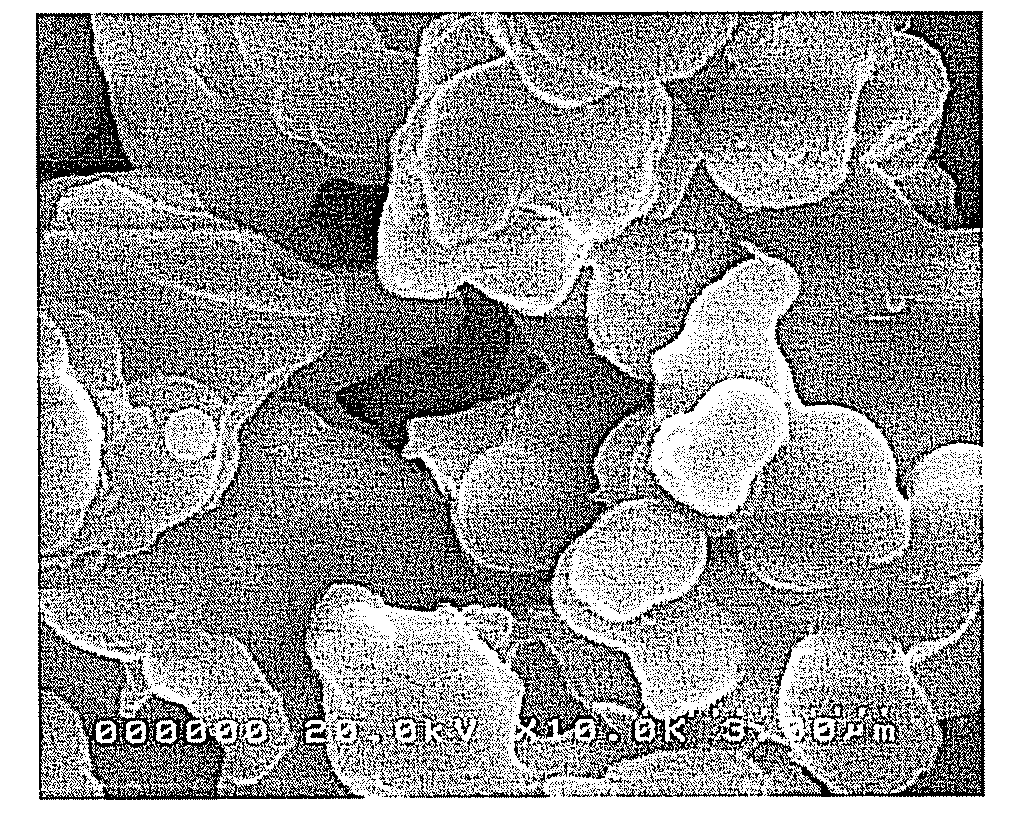Composite light-emitting material and light-emitting device comprising the same
a technology of light-emitting devices and composite light-emitting materials, which is applied in the field of composite light-emitting materials and light-emitting devices comprising the same, can solve the problems of lowering the luminous efficiency of semiconductor nanocrystals, prone to surface defects, and affecting the operation of light-emitting devices, so as to achieve efficient regulation of the characteristics of light-emitting devices and simplify the application procedure
- Summary
- Abstract
- Description
- Claims
- Application Information
AI Technical Summary
Benefits of technology
Problems solved by technology
Method used
Image
Examples
preparation example 1
Preparation of Semiconductor Nanocrystals
[0074]About 32 grams (g) of trioctylamine (hereinafter, referred to as “TOA”), about 1.8 g of oleic acid and about 1.6 millimoles (mmol) of cadmium oxide were simultaneously added to a 125 milliliter (ml) flask equipped with a reflux condenser and stirred at a controlled reaction temperature of about 300 degrees Celsius (°C.). About 2 ml of a 2 molar (M) Se-TOP (trioctylphosphate) complex solution was rapidly added to the reaction mixture, and about 90 seconds after the addition, about 0.08 mmol of an octylthiol complex solution mixed with about 6 mlof TOA was gradually poured thereto. After the reaction for about 40 minutes, about 16 ml of a zinc oleate complex solution that was separately prepared was gradually added to the resulting reaction mixture.
[0075]The zinc oleate complex solution was prepared by adding about 4 mmol of zinc acetate, about 2.8 g of oleic acid and about 16 g of TOA to a 125 ml flask equipped with a reflux condenser an...
example 1
Preparation of a Composite Light-Emitting Material
[0078]After about 100 milligrams (mg) of the red light-emitting semiconductor nanocrystal prepared in Preparation Example 1 was separated by centrifugation, about 205 mg of 5-amino-1-pentanol being present in the amount of about 50 percent (%) by weight in ethanol was added thereto, and the mixture was stirred at room temperature for about 30 minutes so as to be evenly dispersed. About 300 mg of ethanol was added to the stirred mixture and further stirred again at room temperature for about 30 minutes, to obtain a solution in which the semiconductor nanocrystals are dispersed homogeneously. About 10 mg of triethoxysilylpropyl isocyanate was again added to the solution followed by adding about 50 mg of 3-aminopropyltrimethoxysilane thereto. The resulting mixture was stirred at room temperature for about 5 minutes, mixed with about 0.2 g of a green light-emitting phosphor TG-3540 (manufactured by Sarnoff Corporation), and then further ...
example 2
Preparation of a Composite Light-Emitting Material
[0080]After about 100 mg of the red light-emitting semiconductor nanocrystal prepared in Preparation Example 1 was separated by centrifugation, it was dispersed in chloroform as a solvent in the amount of about 1% by weight. Separately, about 0.05 g of polymethyl methacrylate (PMMA) having a weight average molecular weight of about 15,000 was dissolved in about 2.5 ml of chloroform and sufficiently stirred at room temperature for about an hour or more. About 0.3 ml of the semiconductor nanocrystal solution prepared above was added to the PMMA solution and stirred so as to form a homogeneous mixture. About 0.2 g of a green light-emitting phosphor TG-3540 (manufactured by Sarnoff Corporation) was added to the mixture and further stirred at room temperature for about 2 hours. The stirred solution was centrifuged as-is to separate a precipitate. The precipitate thus obtained was heated to about 50° C. so as to evaporate the solvent, to o...
PUM
 Login to View More
Login to View More Abstract
Description
Claims
Application Information
 Login to View More
Login to View More - R&D
- Intellectual Property
- Life Sciences
- Materials
- Tech Scout
- Unparalleled Data Quality
- Higher Quality Content
- 60% Fewer Hallucinations
Browse by: Latest US Patents, China's latest patents, Technical Efficacy Thesaurus, Application Domain, Technology Topic, Popular Technical Reports.
© 2025 PatSnap. All rights reserved.Legal|Privacy policy|Modern Slavery Act Transparency Statement|Sitemap|About US| Contact US: help@patsnap.com



